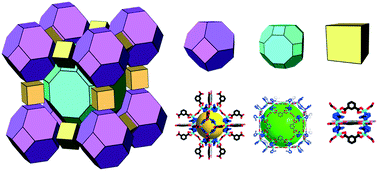Construction of a zeolite A-type multivariate metal–organic framework for selective sensing of Fe3+ and Cr2O72−†
Abstract
Construction of zeolite-type frameworks is of broad interest and mainly achieved by using imidazolate linkers. Incorporation of multiple linkers/functionalities into these unique types of frameworks would potentially expand their application scope. Herein, a three-dimensional (3D) metal–organic framework, BUT-27, with a unique zeolite A structure (LTA topology) was synthesized by linker exchange via single-crystal-to-single-crystal transformation. Addition of isophthalic acid linker to the two-dimensional double layered BUT-25 changed the whole framework to a 3D structure, BUT-27, containing three kinds of linkers. The strong fluorescence and presence of free O and N atoms in the framework make BUT-27 a good luminescent sensor for the detection of Fe3+ and Cr2O72− ions with high selectivity and sensitivity, i.e. Ksv = 1.1 × 104 and 5.9 × 104, and LOD (limit of detection) of 0.19 and 0.26 μM, respectively. These values are lower than the minimum values specified by US-EPA (United States Environmental Protection Agency) indicating its high potential for practical applications.

- This article is part of the themed collection: Coordination Networks


 Please wait while we load your content...
Please wait while we load your content...